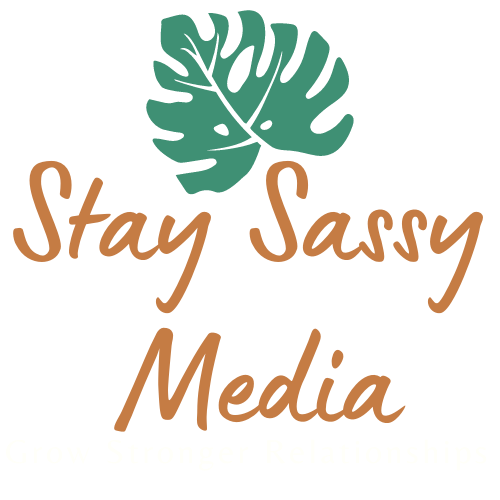The Power of Simplicity
When it comes to building a brand, less is more. Imagine your brand like a first date—you want to be memorable, intriguing, and leave a lasting impression without overcomplicating things. In today's world, where attention spans are shorter than ever, simplicity and consistency are your secret weapons. From fonts and colors to logos, a streamlined approach can transform how customers perceive your business. And spoiler alert—it can help you grow, too!
In this post, we'll dive into why simplifying your branding elements is not just a good idea but a must for any business looking to stand out in a sea of competitors. Let’s get into it!
1. Limiting Your Fonts to 2-3 Maximizes Readability
While it might be tempting to use various fonts to show creativity or variety, too many fonts can overwhelm and confuse your audience. Limiting your brand to 2-3 fonts keeps your message clear and accessible. Here’s why it matters:
Readability: People spend only seconds glancing at branding materials. Easy-to-read fonts make sure they quickly understand your message.
Consistency: Sticking to 2-3 fonts makes your brand visually cohesive. Whether it’s on your website, business cards, or social media posts, your audience will begin to associate these fonts with your business.
Professionalism: Too many fonts can give off an amateur vibe. Streamlined typography shows that your brand is thoughtful and polished.
When choosing fonts, think about their readability across different platforms and how they complement each other. Typically, a combination of a serif font for titles and a sans-serif font for body text works well.
2. The Power of 5 Primary Brand Colors
Color plays a vital role in brand perception. It conveys mood, personality, and even trustworthiness. Selecting a palette of 5 primary colors provides balance, allowing for flexibility while maintaining consistency.
Brand Recognition: Consistently using a set of colors helps your audience associate them with your brand. Think about the iconic red of Coca-Cola or the blue of Facebook. These colors have become integral to their brand identities.
Versatility: Having 5 primary colors gives you room to adapt to various media without losing consistency. You might use more vibrant hues for social media and more subdued tones for professional presentations, but the underlying palette remains the same.
Psychological Impact: Colors evoke emotions. For example, blue can convey trust, while yellow suggests optimism. By carefully choosing a few colors that align with your brand values, you can create a more intentional emotional response.
Keep in mind, consistency in how these colors are used—whether it’s in logos, websites, or print materials—is key to building a cohesive brand identity.
3. Simple Logos Are Timeless (and More Practical)
A logo is often the centerpiece of your brand’s identity. While it might be tempting to create an intricate design to stand out, simplicity is usually more effective.
Instant Recognition: A simple logo is easier to recognize and remember. Think of the Nike swoosh or Apple’s logo. They’re minimalistic, but unforgettable.
Adaptability: A simple logo can be easily adjusted for different uses. Whether it’s on a business card, a billboard, or a mobile app icon, a straightforward design can be resized and repositioned without losing clarity.
Multiple Versions: Having a few different logo variations—such as landscape vs. portrait, with and without a tagline—gives your brand flexibility while maintaining consistency. You can tailor the version to fit different spaces and mediums, ensuring your brand remains cohesive no matter the format.
Avoid overly artistic logos that can become outdated quickly or may not work well in small or large formats. Simplicity leads to longevity and broader application.
4. A Cohesive Brand Image = Business Growth
When your brand is cohesive across all channels, it strengthens your business in numerous ways:
Trust and Credibility: A consistent brand image signals professionalism. When customers see the same colors, fonts, and logos repeatedly, it builds trust and shows that you are reliable and established.
Memorability: A cohesive brand makes it easier for people to remember you. When customers encounter a cohesive brand across different platforms, it reinforces the brand in their minds.
Increased Engagement: A well-executed brand makes your business more appealing. People are more likely to engage with a brand that looks professional, intentional, and visually attractive.
Simplified Marketing Efforts: When your brand elements are defined, it’s easier to create marketing materials, saving time and ensuring all communications reflect the same identity.
Think of your brand like a favorite outfit—it looks best when everything matches and isn’t overdone. By sticking to just a few fonts, colors, and a simple, versatile logo, you create a look that’s not only stylish but instantly recognizable. A cohesive brand is like having a signature style that makes people say, “That’s totally you!”—except in this case, it’s your business.
So, don’t overcomplicate things! Keep your brand clean, cohesive, and consistent, and you’ll not only turn heads but also build trust, engagement, and loyalty. The best part? It makes growing your business that much easier. Simplicity truly is the ultimate sophistication. Ready to streamline your brand and stand out in the best way possible? Schedule a complimentary 1 hour call with Melissa here.

